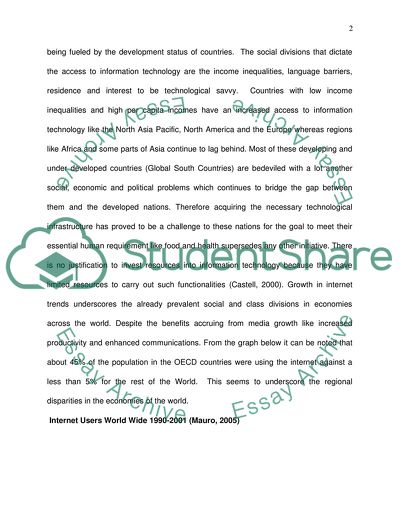Cite this document
(Is There any Such Thing as Digital Divide in Contemporary Society Research Paper, n.d.)
Is There any Such Thing as Digital Divide in Contemporary Society Research Paper. Retrieved from https://studentshare.org/information-technology/1726203-is-there-any-such-thing-as-digital-divide-in-contemporary-society-if-so-what-policy-steps-should-be-taken-to-eliminate-it-and-by-whom
Is There any Such Thing as Digital Divide in Contemporary Society Research Paper. Retrieved from https://studentshare.org/information-technology/1726203-is-there-any-such-thing-as-digital-divide-in-contemporary-society-if-so-what-policy-steps-should-be-taken-to-eliminate-it-and-by-whom
(Is There Any Such Thing As Digital Divide in Contemporary Society Research Paper)
Is There Any Such Thing As Digital Divide in Contemporary Society Research Paper. https://studentshare.org/information-technology/1726203-is-there-any-such-thing-as-digital-divide-in-contemporary-society-if-so-what-policy-steps-should-be-taken-to-eliminate-it-and-by-whom.
Is There Any Such Thing As Digital Divide in Contemporary Society Research Paper. https://studentshare.org/information-technology/1726203-is-there-any-such-thing-as-digital-divide-in-contemporary-society-if-so-what-policy-steps-should-be-taken-to-eliminate-it-and-by-whom.
“Is There Any Such Thing As Digital Divide in Contemporary Society Research Paper”, n.d. https://studentshare.org/information-technology/1726203-is-there-any-such-thing-as-digital-divide-in-contemporary-society-if-so-what-policy-steps-should-be-taken-to-eliminate-it-and-by-whom.


